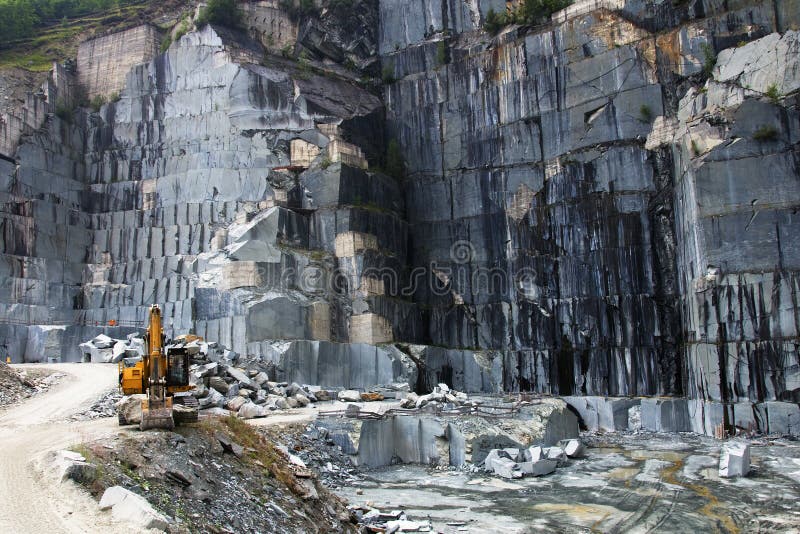Uncovering the Rich History and Lasting Practices of Granite Quarrying
As we base on the precipice of revealing the elaborate tapestry of granite quarrying, a trip through time reveals not simply the physical act of removing rock yet also the cultural and historic importance woven right into the really fabric of this method. From the old origins that laid the foundation for modern-day quarrying techniques to the sustainable methods that are forming the future of this industry, each sculpt mark on granite surface areas informs a story waiting to be discovered (granite quarries in south africa). The tradition of granite quarrying extends much past mere extraction; it is a testimony to human ingenuity, strength, and the enduring appeal of this stunning rock
Old Beginnings of Granite Quarrying
Dating back to ancient worlds, the method of quarrying granite has actually been an integral part of human history and architectural development. The earliest proof of granite quarrying go back to old Egypt, where massive pyramids and intricate sculptures were crafted from this resilient stone. The Egyptians used primitive devices to remove granite blocks from quarries, showcasing the importance of this material in their significant buildings.
Moving on in background, the Greeks likewise made significant contributions to the quarrying of granite. The Greeks used granite in various architectural marvels, such as temples and statues, demonstrating their skill in shaping and sculpting this durable rock. The Romans better improved the strategies of quarrying granite, using innovative devices like knives and hammers to remove and form granite for their famous frameworks.
With the centuries, the method of quarrying granite has actually progressed, with contemporary technologies improving performance while keeping the classic charm of this all-natural stone - granite quarries in south africa. From ancient worlds to contemporary building contractors, the tradition of granite quarrying remains to shape our globe
Advancement of Quarrying Strategies
The evolution of quarrying strategies has been noted by a constant development towards greater efficiency and accuracy in drawing out granite. Early quarrying methods involved manual labor with fundamental tools such as chisels, hammers, and wedges to extract granite blocks from the planet.
In more recent times, the arrival of machinery changed the quarrying industry, making it possible for much faster extraction rates and boosted productivity. Technologies such as diamond cable saws, high-pressure water jets, and pneumatically-driven drills have ended up being standard in modern quarries, enabling specific cutting and decreased waste. Innovations in computer-controlled tools and 3D modeling have optimized quarrying operations, leading to very little ecological impact and improved sustainability methods. As the need for granite continues to climb, the evolution of quarrying methods continues to be integral to meeting market needs effectively and sustainably.
Social Value of Granite
Granite holds a profound social significance throughout various civilizations because of its enduring presence in building work of arts and respected monuments. From the magnificent pyramids of Egypt to the complex makings of the Angkor Wat holy place in Cambodia, granite has been a product of option for expressing splendour and durability in social heritage. In old Rome, granite columns embellished temples and public buildings, signifying stamina and permanence. The social relevance of granite extends past its physical features; it symbolizes resilience, security, and timelessness, making it a symbol of sustaining traditions and practices.

Lasting Practices in Quarrying
In the middle of the rich background of granite quarrying and its cultural importance exists an expanding emphasis on lasting methods within the industry. As ecological understanding and issues about source exhaustion have increased around the world, the quarrying market has significantly accepted lasting techniques to minimize its influence on the environment and bordering communities.

In addition, reclamation and rehabilitation of quarry websites post-extraction are indispensable to lasting techniques. By recovering quarried locations to a natural or useful state, such as producing wildlife habitats or recreational spaces, quarriers can offset the ecological impact of their procedures and contribute positively to the neighborhood ecosystem.
Heritage of Granite Quarrying
With a historic backdrop steeped in craftsmanship and commercial progress, what enduring influence has granite quarrying left on the landscape of contemporary society? The legacy of granite quarrying goes beyond plain removal practices; it has formed architectural marvels, city landscapes, and social heritage worldwide. The long lasting nature of granite has made it a favored selection for monuments, structures, and framework, standing as a testament to the ability and creativity of quarry workers throughout generations.
Additionally, the economic impact of granite quarrying can not be ignored. The industry proceeds to offer job opportunity and drive local economic situations in areas where granite removal prevails. It has additionally spurred technical improvements in quarrying techniques and tools, resulting in more reliable and sustainable methods.
In terms of sustainability, the tradition of granite quarrying includes efforts to minimize environmental effects through improvement projects and liable resource administration. By balancing economic interests with ecological stewardship, the market makes every effort to make sure that future generations can continue to take advantage of this enduring natural deposit.
Verdict
